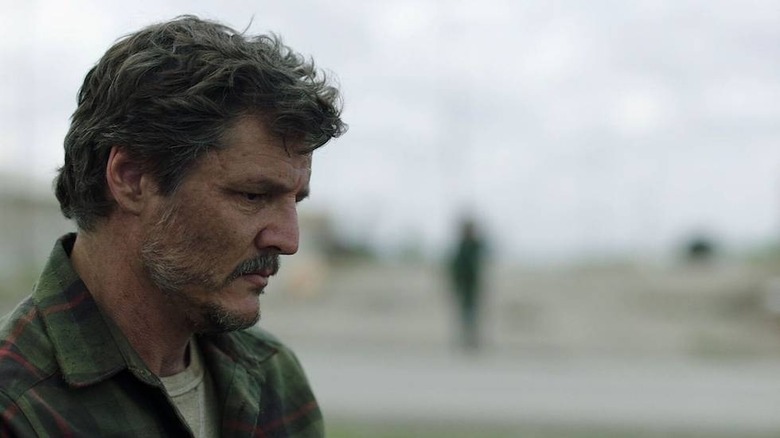The Last Of Us Amps Up The Failures Of The Pandemic Era
Contains spoilers for "The Last of Us" Episode 2
It would be unfair to say that "The Last of Us" is a zombie story. Sure, the story takes place after a fungus-themed version of the zombie apocalypse, the Infected are a huge threat, and what little remains of the society has shaped up the way it has precisely because of this. Even Joel's (Pedro Pascal) mission to get Ellie (Bella Ramsey) to the Fireflies happens because the latter is immune to infection, and therefore the key to a potential cure. However, "The Last of Us" is ultimately about humanity. It explores what becomes of the people who are struggling to survive these harsh circumstances — and looks into how this kind of global disaster happened in the first place.
Stories like "The Last of Us" hit different after the COVID-19 pandemic started, and HBO's live action adaptation of the beloved video game knows this very well. Though the world killer here is a mutated Cordyceps fungus instead of a virus, the show's first two episodes pay special attention to the beginning stages of the apocalyptic series of infections, highlighting and amping up the real-world failures of the pandemic era.
The Cordyceps infection is a pandemic turned up to 11
From the old-timey talk show opening of "The Last of Us" Episode 1, it's clear that the show intends to explore the roots of the Cordyceps infection at far more depth than the game's core story does. The talk show scene suggests that global warming is the reason that prompted cordyceps to evolve into something that can affect human beings, and the news flashes in the episode establish that the first known cases of human Cordyceps infection took place in Indonesia.
Episode 2 takes the action to Jakarta, the country's capital. There, we see how the authorities found out about the first cases, and how the viewpoint character, Mycology professor Ibu Ratna, realizes how serious the situation is. In the end, the only thing she can recommend to the authorities is bombing the entire city to the ground, though she — and she alone — clearly understands that it's way too late for that.
The cordyceps infection is clearly a very different beast than anything that exists in the real world, and its rapid spread and apocalyptically destructive effects are well beyond history's worst pandemics. Even so, when you watch the first two episodes with knowledge of the COVID-19 pandemic, it's pretty clear where the show draws inspiration for its strange affliction that starts in a faraway location, and how it rapidly spreads all over the world as the authorities prove unable to contain it.

